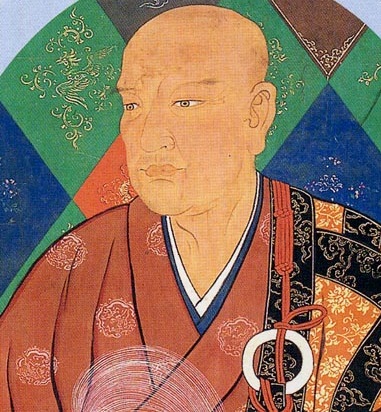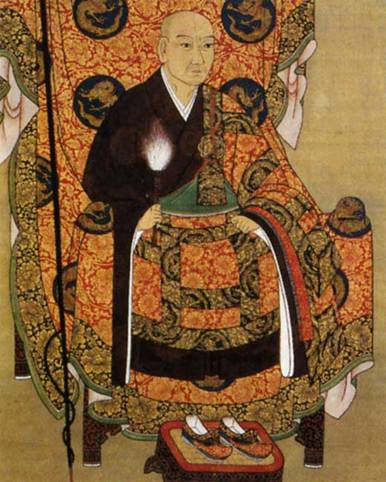ZEN MESTEREK ZEN MASTERS
« Zen főoldal
« vissza a Terebess Online nyitólapjára

以心崇伝 Ishin Sūden (1569–1633)
https://en.wikipedia.org/wiki/Ishin_S%C5%ABden
https://ja.wikipedia.org/wiki/%E4%BB%A5%E5%BF%83%E5%B4%87%E4%BC%9D

Ishin Sūden. (以心崇傳) (1569–1633). Japanese ZEN master in the RINZAISHŪ.
Sūden was born in Kii (present-day Wakayama prefecture) and, while still a
youth, left home to become a monk at the Zen monastery of NANZENJI. In
1608, he was appointed the scribe of the new shōgun Tokugawa Ieyasu (1543–
1616). Sūden was put in charge of foreign correspondence and was also given the
important title of sōroku, or registrar general of monks. As sōroku, Sūden
established the hatto (“laws”) for temples and monasteries and put them under
the direct control of the bakufu government. Sūden thus came to be known as the
kokui no saishō, or “black-robed minister.” With the assistance of the bakufu,
Sūden also restored Nanzenji to its former glory. Konchi’in, the name of Sūden’s
residences at both Nanzenji and Edo, came to be synonymous with Sūden and his
policies. After Ieyasu’s death, Sūden continued to assist the second shōgun
Tokugawa Hidetada (1579–1632) in political and religious affairs. In 1626, Sūden
was given the honorary title Enshō Honkō kokushi (State Preceptor Perfectly
Illuminating, Original Radiance) from Emperor Gomizunoo (r. 1611–1629). His
diary the Honkō kokushi nikki, is a valuable source for studying the sociopolitical
history of the early Tokugawa bakufu. Sūden also left a collection of poems
known as the Kanrin gohōshū.
The Princeton Dictionary of Buddhism, p. 375.